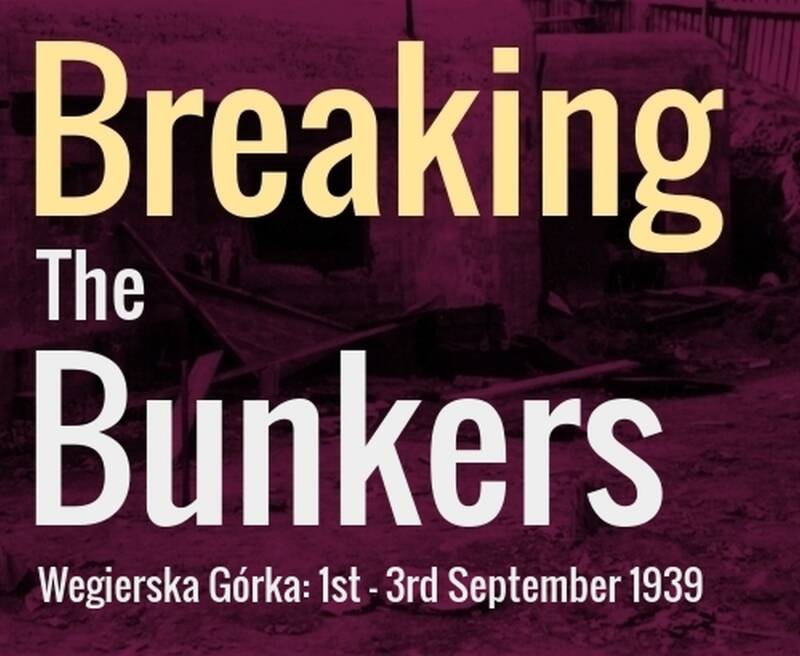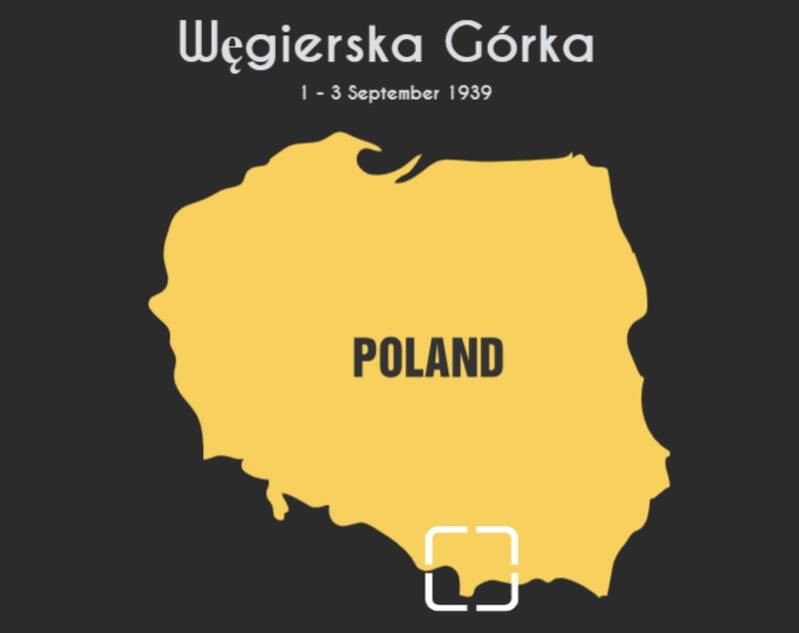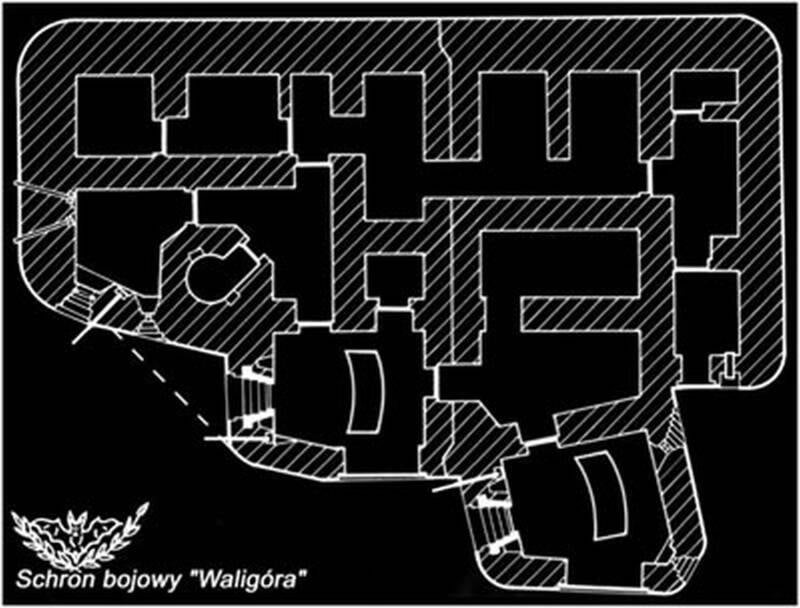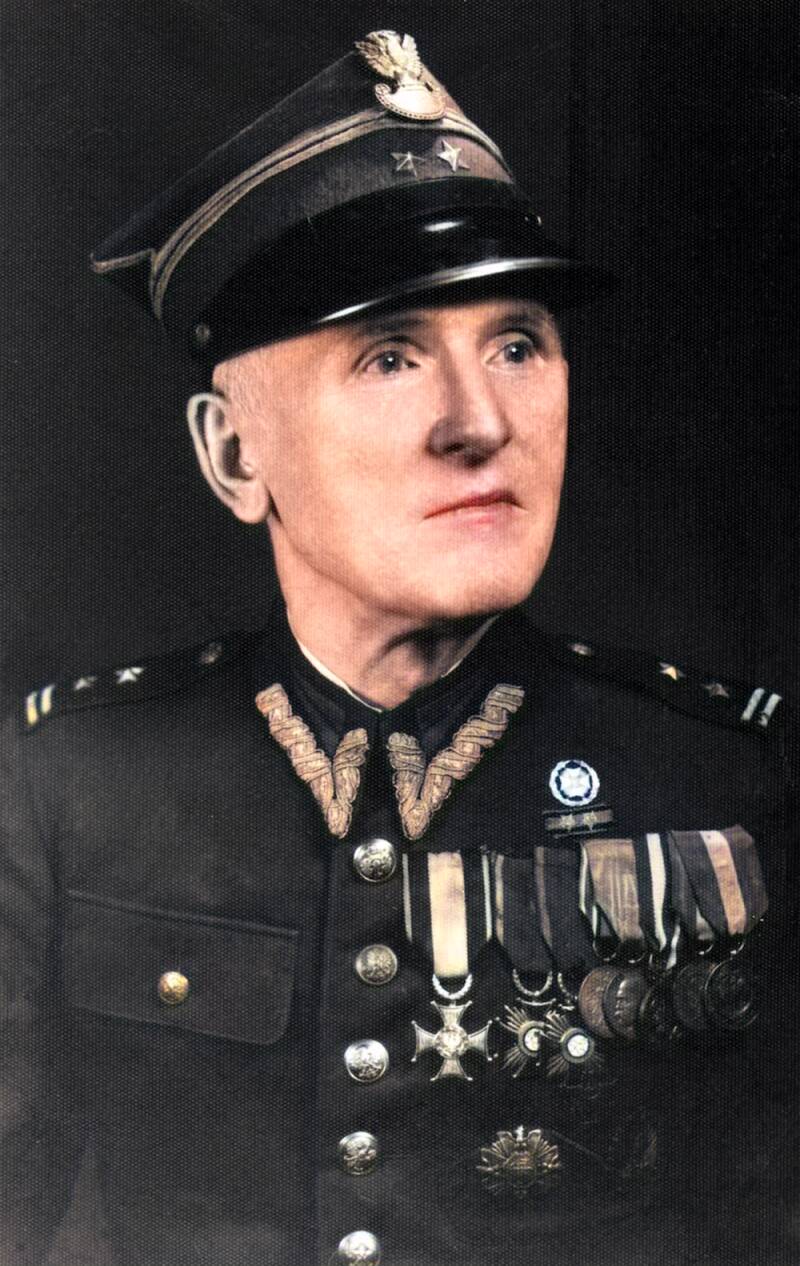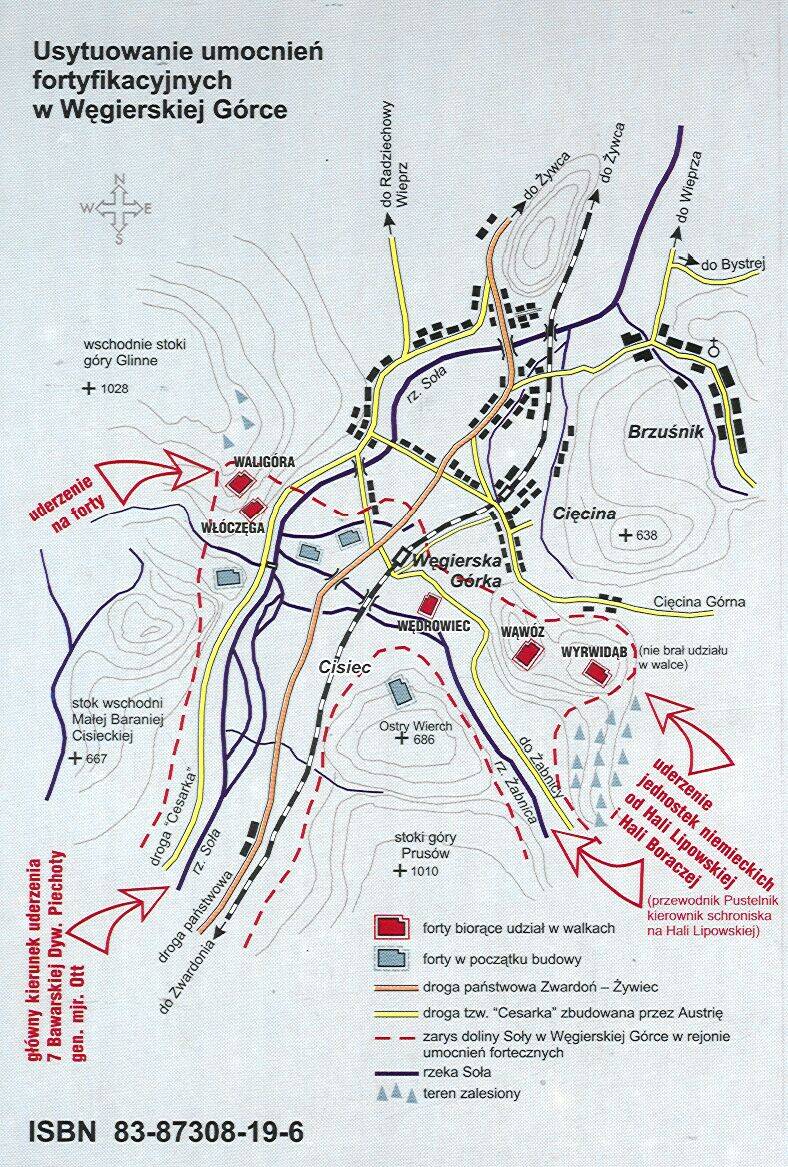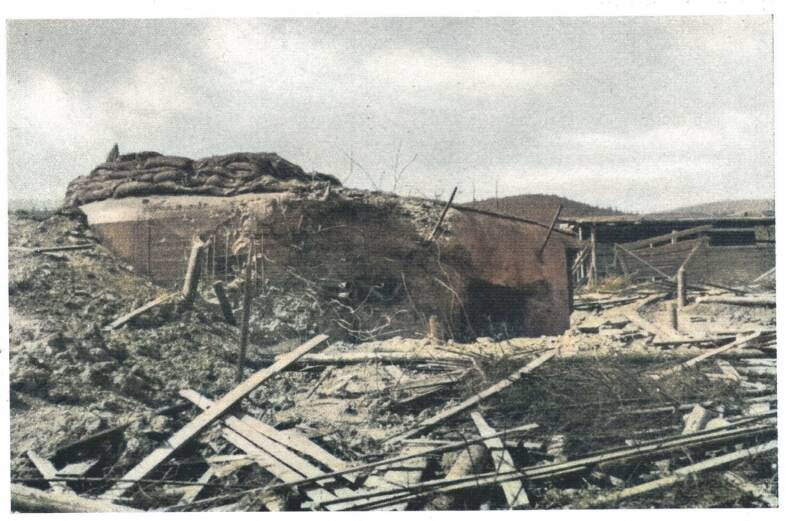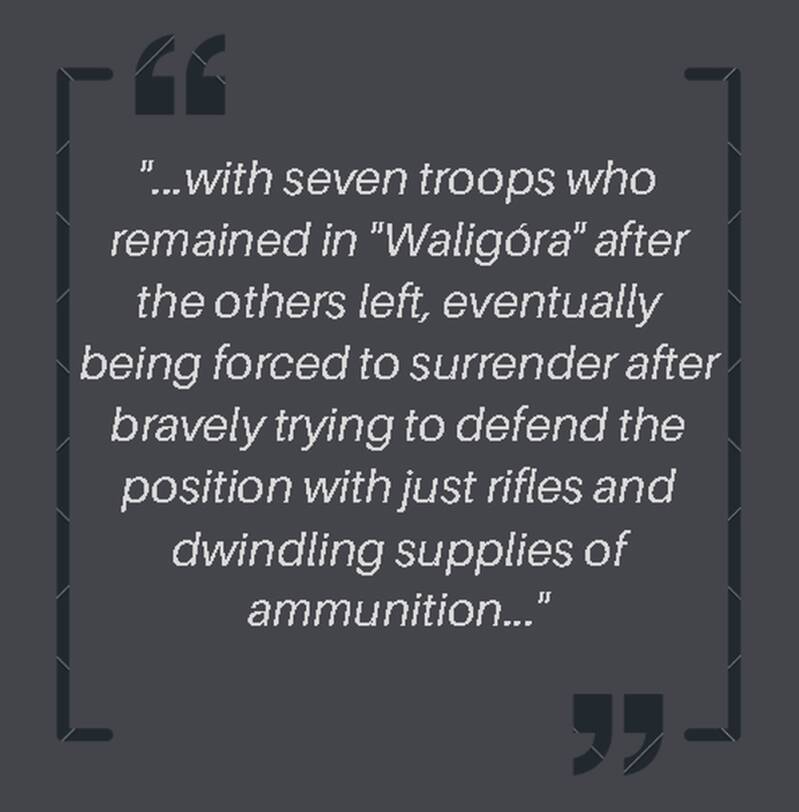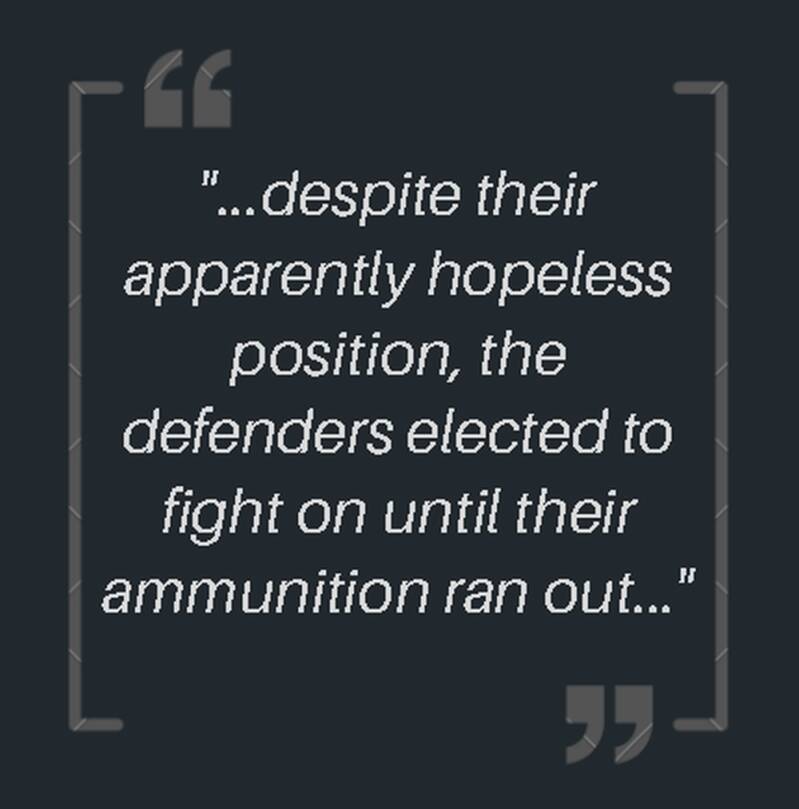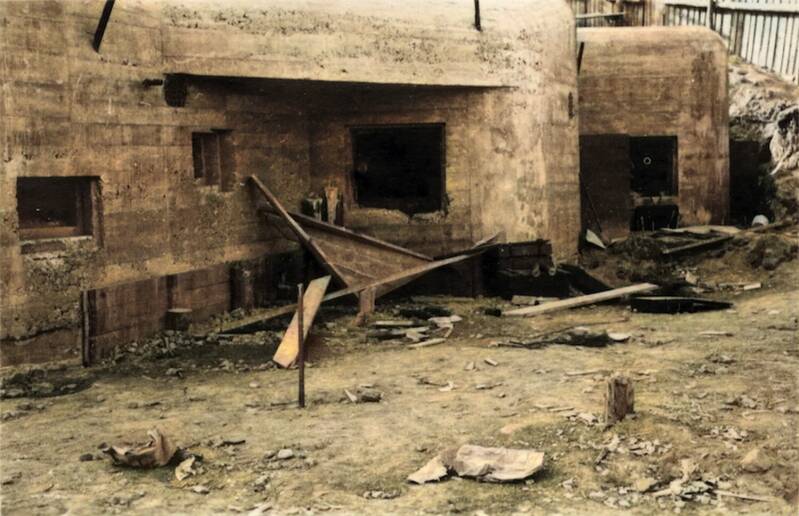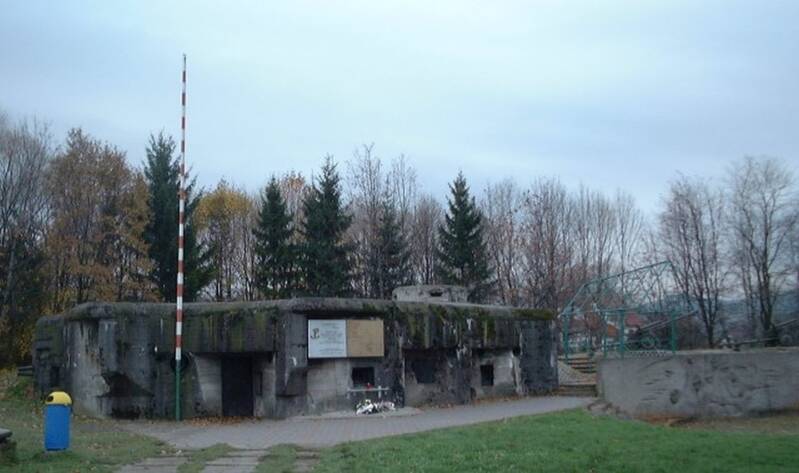Guarding the southern border
With a second World War looking increasingly likely after Hitler marched his forces into Czechoslovakia, Poland – fearing they were next on his wish list – started to prepare. Sensing that the southern border was vulnerable to a German invasion, in April 1939, a Colonel Tadeusz Zieleniewski was sent by the Polish General Inspectorate of Armed Forces to assess and prepare defences in this region. Aside of providing a barrier to any advancing Germans, these fortifications would also act as a shield for the southern flank of the important Kraków Army.
Tadeusz’s plan was to create four separate fortified zones which would cover all four major rivers in this area:
- Sola Valley would be guarded by 20 area bunkers clustered around the village of Węgierska Górka.
- The Koszarawa River area would be defended by bunkers at Korbielów, Krzyżowa and Przyborów.
- The Skawa River, a tributary of the Vistula, would have bunkers constructed at Bystra and Jordanów.
- Raba River valley area would be fortified with bunkers in Raba Niżna.
With Tadeusz’s plan being accepted, work begun on these fortifications in early July of the same year.
Defences at Węgierska Górka
At Węgierska Górka, the bunkers would be constructed in a crescent shape on a hill, overlooking the nearby village from a height of 1000 metres. The work was carried out by works battalions commanded by a Major Śliwiński. The bunkers varied in design although all could house at least one anti-tank gun, several heavy machine guns and accommodate at least twenty soldiers. The bunkers were sturdily built, with reinforced concrete mixed in with dense porphyry (igneous rock consisting of coarse-grained crystals) rocks. Once completed, the Poles considered them essentially impregnable such was the thickness of their walls.
Design blueprints for the Waligóra bunker.
https://web.archive.org
Each of the bunkers in this zone had a name starting with a ‘W’.
- Wędrowiec - ‘Traveller’
- Wąwóz -‘Gorge’
- Waligóra – ‘Mountaincracker’ - name of a folk tale hero.
- Włóczęga -‘Hobo’.
- Wyrwidąb - also named after a folk tale hero - had to be abandoned due to lack of crews.
Specification for the five bunkers.
These five bunkers were the only ones completed at the outbreak of war on 1 September 1939 – and only four of these were actually manned by soldiers. Furthermore, these bunkers lacked defensive cupolas for the heavy machine guns, had no electricity or telephone network for communication – forcing the defenders to resort to rudimentary means of maintaining contact: signal pipes, steel tubes with reflectors for Morse Code – which would be hopeless if smoke obscured the battlefield.
Map showing the location of the bunkers.
With no electricity rigged up, the crews had to make do with kerosene lamps and candles for light and with the electric water pumps inoperable, find other means in which to acquire water – not easy if attempted during the middle of a battle. Even worse, the bunkers lacked ammunition – the scheduled supplies never arriving due to the outbreak of war.
The remaining fifteen bunkers scheduled to be built were still in various stages of construction and could not be implemented into the Polish defensive plans.
Panoramic modern view showing the location of the bunkers.
The Polish defenders
In total, the four bunkers were manned by 70 soldiers from the 151st Fortress Company “Węgierska Górka"and were commanded by a Captain Tadeusz Semik. They were supported a Border Defence Corps battalion “Berezwecz”, who were led by a Major Kazimier Czarkowski. The Poles had two batteries of light artillery from the 55th Light Artillery Regiment and one battery of artillery from the Polish 1st Mountain Brigade. Additionally, other Polish units also reinforced the defences, including two platoons of the "Żywiec" National Defence battalion and a unit from the Border Guard. In total, the Polish defenders numbered around 1,200 men.
Lieutenant Colonel Tadeusz Semik, Commander of the 151 "Węgierska Górka" Fortress Company.
https://sucha-beskidzka.pl
Colonel Janusz Gaładyk, Commander Polish 1st Mountain Brigade.
http://16wdh.pl
The German attackers
Facing them was the entire German 7th Infantry Division led by Major General Eugen Ott and part of the German 14th Army, itself coming under the control of the German XVII Corps – commanded by Wilhelm List. The 7th Infantry was split into three, well equipped infantry regiments and reinforced with powerful 150mm artillery. All told, the German forces numbered around 17,00 soldiers, outnumbering the Polish defenders ten to one.
General Wilhelm List, Commander of the German 14th Army.
http://thirdreichcolorpictures.blogspot.com
Major General Eugene Ott, Commander of the German 7th Infantry Division.
Eugen Ott (general) - Alchetron, The Free Social Encyclopedia
The battle
On the morning of 1st September, the Germans launched their attack, sending the 7th Infantry Division across the border near Milówka to try and break through the Polish defences and outflank the Kraków Army. By achieving this, the Polish formation would be unable to retreat and could face being surrounded and eliminated.
However, the Germans were delayed thanks to the resistance put up by Polish infantry companies of the reserve National Defence and Border Defence Corps, who despite being heavily outnumbered, managed to hamper the attacking Germans, who ultimately did not reach their objective until the evening, despite only having to travel around 10 kilometres.
The outnumbered Polish units then withdrew to the main defence line in front of Węgierska Górka, with the Germans arriving there the following morning.
Map of the battlefield.
The Germans attempted to quickly storm the Polish defences but were battered back by the defenders, suffering significant losses. Realising a more measured approach would be called for, the Germans called in artillery and air support to soften up the Polish defences. However, they still held and one again, the Germans were beaten back, costing the Germans eight tanks and armoured vehicles destroyed.
Despite these setbacks, the German assaults elsewhere were more successful forcing Colonel Janusz Gaładyk, commander of the Polish 1st Mountain Brigade, to order all Polish units to withdraw to the area around the village of Oczków. From here, they continued to guard the flank of the Polish 21st Infantry Division. However, these orders did not reach all the Polish defenders in the bunkers with only those within the "Waligóra" position (along with a few units of artillery and elements of the "Berezwecz" battalion) realising it was time to pull back. The Polish troops in the other three bunkers, unaware of the withdrawal order, remained at their positions
A damaged bunker after the battle.
Heavy fighting in the area continued, with seven troops who remained in "Waligóra" after the others left, eventually being forced to surrender after bravely trying to defend the position with just rifles and dwindling supplies of ammunition. Tragically, these seven men were executed shortly afterwards by the Germans, apparently ignoring the Geneva Convention regarding the treatment of captured soldiers and foreshadowing of how many Poles would suffer at the hands of the Germans in the years to come.
German soldiers standing next to the entrance. of a captured bunker. Damage from the battle can clearly be seen.
https://forum.axishistory.com/
Overnight, the Germans gradually managed to surround the remaining Polish positions but despite their apparently hopeless position, the defenders elected to fight on until their ammunition ran out. The "Włóczęga" was the first to run out of ammunition at 8:30 that morning, leading to its occupant’s surrender. With this bunker now in German hands, the remaining Polish held bunkers found their position increasingly untenable.
German units during the battle.
https://wegierska-gorka.opg.pl/
The “Wędrowiec" was now vulnerable to German attacks and infantry managed to get close enough to throw in hand grenades to suppress the defenders. Although the Poles inside escaped injury, the confusion allowed the Germans to wheel up an anti-tank gun and fire at point blank range. Faced with this intense close quarter barrage, the Polish defenders retreated further into the bunker and continued to fight with their rifles but their heavy machine guns and 37mm anti-tank guns were now lost or destroyed. Eventually, after relentless German pressure, the last defenders of the "Wędrowiec" were forced to surrender at 5’o’clock that afternoon.
The Germans now found their route towards Kraków and retreating Kraków Army open.
The 'Waligóra' bunker after the battle.
https://forum.axishistory.com/
The final Polish bunker, the "Wąwóz", was still holding out, but keen to avoid unnecessary losses, the Germans simply bypassed it and moved on. The fortunate defenders waited until night fell and then withdrew to re-join other Polish units in the area.
In total, Polish losses during the battle were 13 killed and about 20 wounded. The Germans suffered worse – reflecting the stubbornness of the Polish defenders – with about 100 killed and wounded.
Modern photograph of Fort "Wędrowiec" in Węgierska Górka.
Wikipedia
Sources:
Wikipedia
https://web.archive.org/web/20070703072608/http://149.156.142.12/weggor/wg/rys/schematy.htm
https://web.archive.org/web/20060714211145/http://149.156.142.12/weggor/wg/przygotowanie.htm
https://wegierska-gorka.opg.pl/wegierska-gorka-1939
https://de.wikipedia.org/wiki/Benutzer:NordNordWest
https://alchetron.com/Eugen-Ott-(general)
http://thirdreichcolorpictures.blogspot.com/2010/03/generalfeldmarschall-wilhelm-list.html
https://sucha-beskidzka.pl/pl/942/0/tadeusz-semik.html
